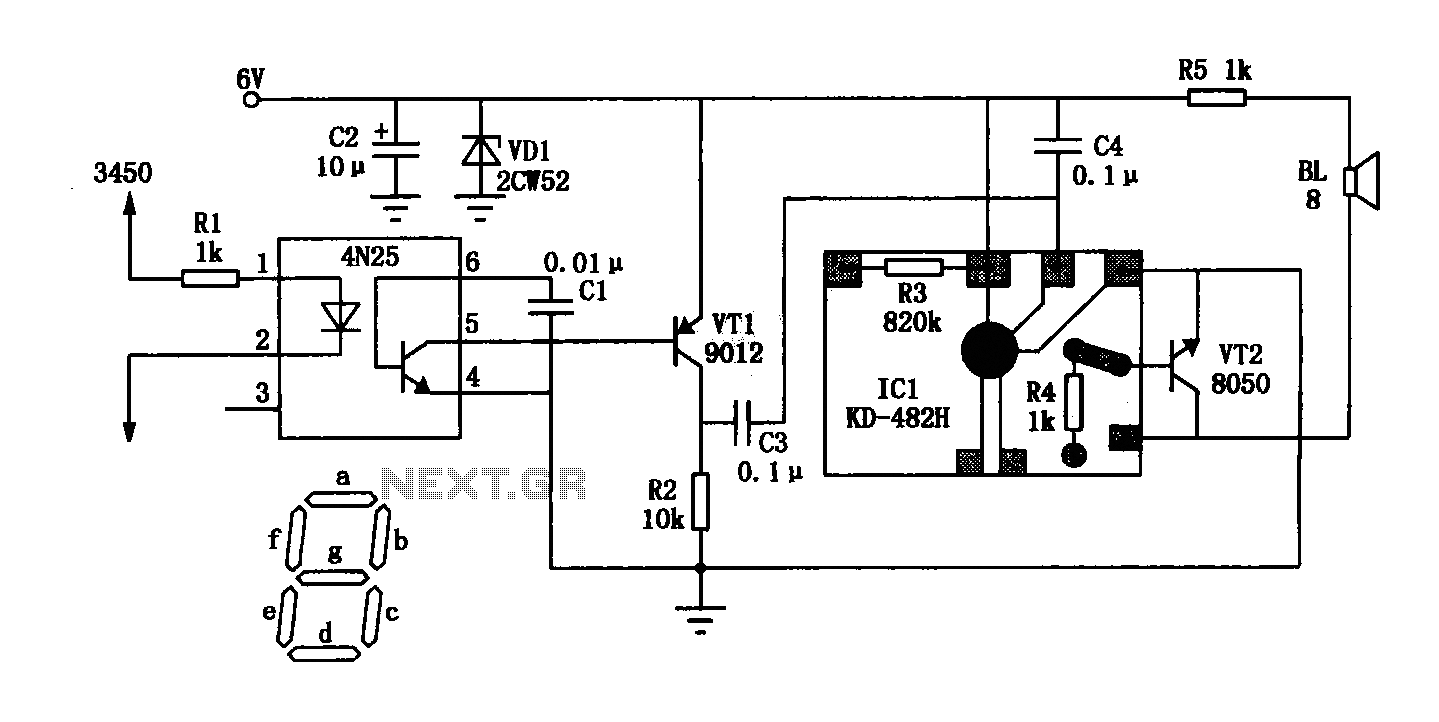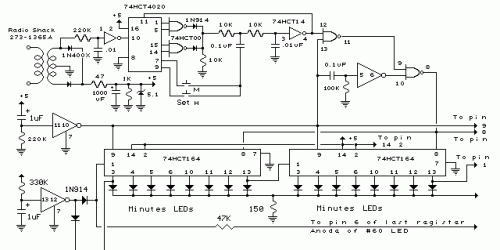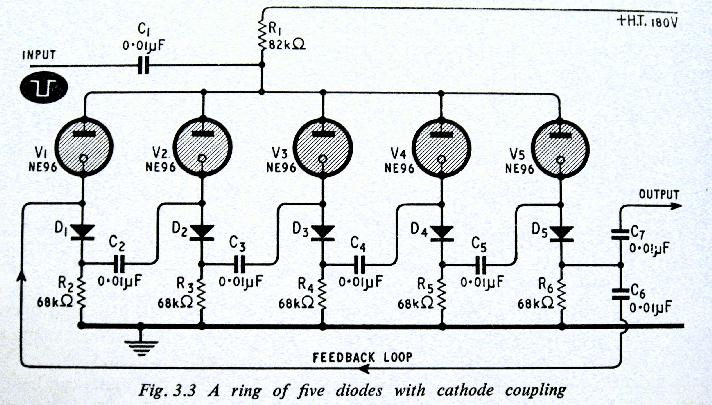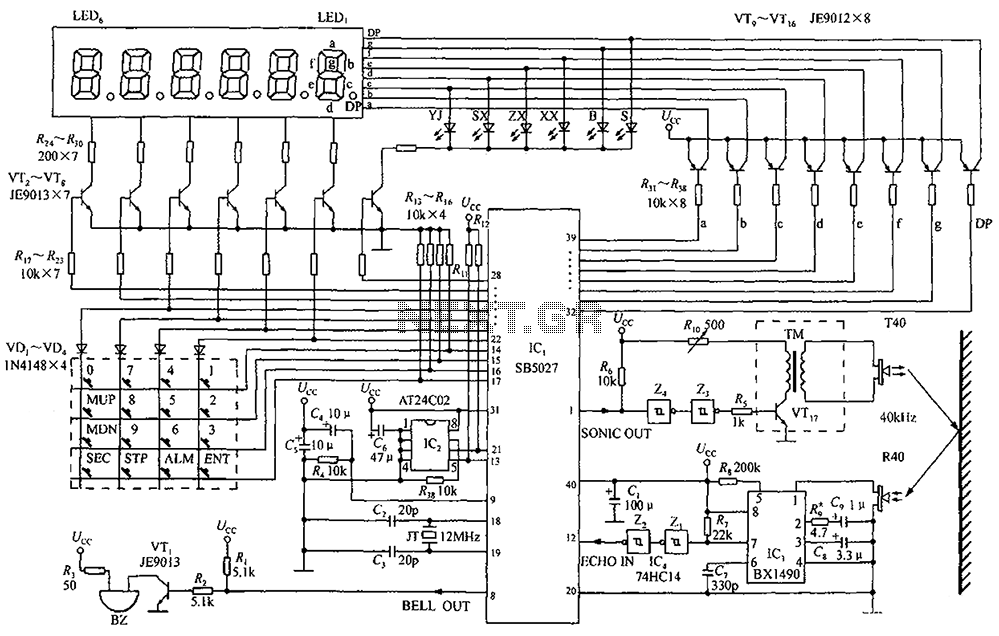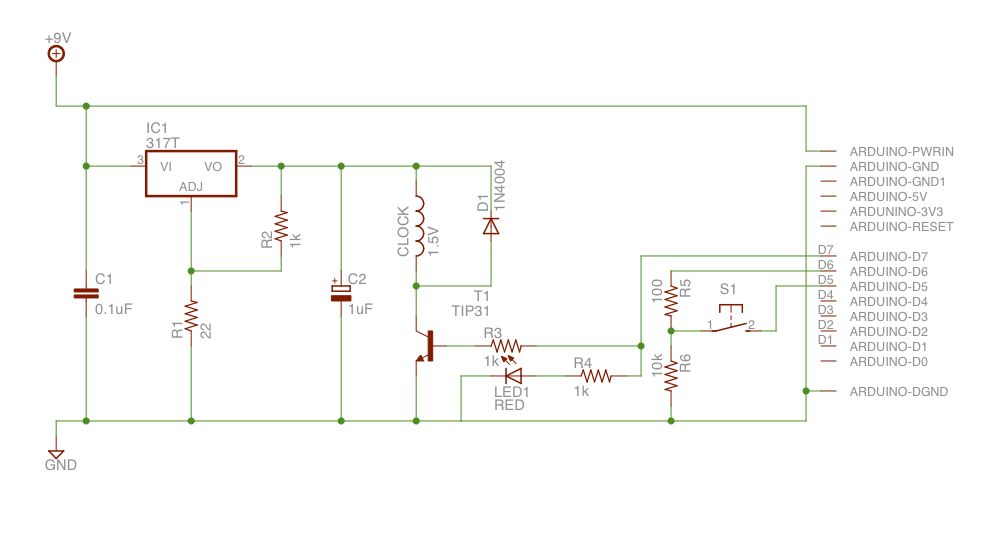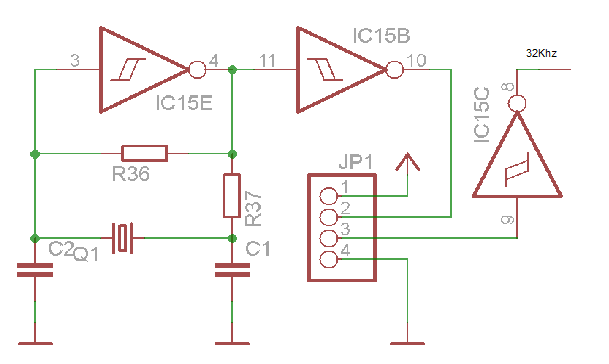
Thrifty 2Hz Clock
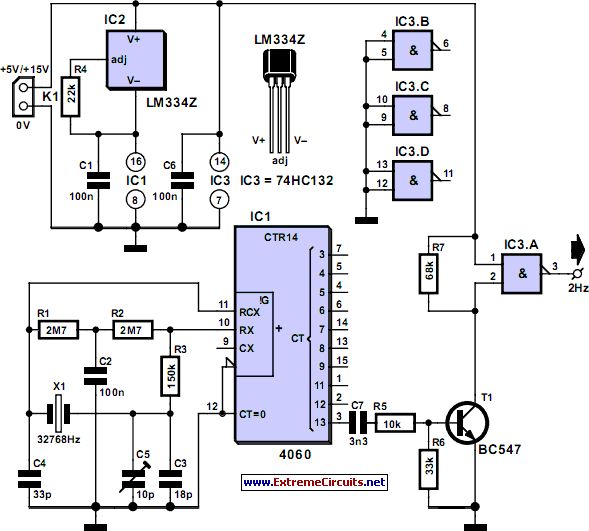
CMOS circuits are recognized for their low current consumption, which is particularly crucial for battery-powered applications. However, oscillators typically demand a significant amount of current. This proposed oscillator circuit achieves a very low current consumption of approximately 3 µA. It is powered by an LM334Z current source, with the current set to about 3 µA using resistor R4. This current level is adequate to support IC1 and the surrounding oscillator circuit based on crystal X1. The oscillator produces a signal utilizing an inexpensive watch crystal and a few additional components, which is then fed into the frequency divider of the 4060 IC, generating a 2 Hz output at pin 3 (output Q13). The output pulse levels are considerably lower than the standard 5-V power supply voltage due to the low current operation of IC1. Consequently, the signal from pin 3 of IC1 is amplified and inverted by transistor T1. Finally, IC3a converts the signal into a proper square wave with suitably steep edges.
This oscillator circuit is designed to operate efficiently within low-power environments, making it ideal for portable and battery-operated devices. The use of a CMOS configuration ensures minimal power loss, which is advantageous in extending battery life. The LM334Z current source is a critical component, providing a stable and adjustable current supply, which is essential for maintaining the oscillator's performance without drawing excessive power.
The oscillator circuit employs a watch crystal, known for its precision and cost-effectiveness, to establish the frequency of oscillation. The surrounding passive components, including capacitors and resistors, are selected to optimize the performance of the oscillator, ensuring that it generates a stable frequency output. The 4060 frequency divider IC is utilized to further process the oscillation signal, effectively dividing the frequency down to the desired 2 Hz output, which can be used for timing applications or as a clock signal for other circuits.
The amplification and inversion stage using transistor T1 is necessary to ensure that the output signal from the oscillator meets the required voltage levels for subsequent circuitry. IC3a serves as a final stage in shaping the output waveform, providing a clean square wave with sharp transitions, which is crucial for digital applications where signal integrity is paramount. This careful design consideration allows the oscillator circuit to function reliably in various electronic applications while maintaining low power consumption.CMOS circuits are known for their low current consumption. This is particularly important for battery-powered circuits. Unfortunately, oscillators often require quite a bit of current. We therefore propose this oscillator circuit that has a very low current consumption (about 3 µA). The circuit is powered from a type LM334Z current source. The cu rrent has been set with R4 to about 3 µA. This is sufficient to power IC1 and the oscillator circuit around X1. The oscillator generates, with the aid of a cheap watch crystal and a few surrounding parts, a signal that is subsequently applied to the divider in the 4060 and results in a frequency of 2 Hz at pin 3 (output Q13). The level of the output pulses is a lot lower than the nominal 5-V power supply voltage (IC1 is after all powered from a current source with very low current).
That is why the signal on pin 3 of IC1 is amplified and inverted by T1. IC3a finally turns it into a proper square wave with acceptably steep edges. 🔗 External reference
This oscillator circuit is designed to operate efficiently within low-power environments, making it ideal for portable and battery-operated devices. The use of a CMOS configuration ensures minimal power loss, which is advantageous in extending battery life. The LM334Z current source is a critical component, providing a stable and adjustable current supply, which is essential for maintaining the oscillator's performance without drawing excessive power.
The oscillator circuit employs a watch crystal, known for its precision and cost-effectiveness, to establish the frequency of oscillation. The surrounding passive components, including capacitors and resistors, are selected to optimize the performance of the oscillator, ensuring that it generates a stable frequency output. The 4060 frequency divider IC is utilized to further process the oscillation signal, effectively dividing the frequency down to the desired 2 Hz output, which can be used for timing applications or as a clock signal for other circuits.
The amplification and inversion stage using transistor T1 is necessary to ensure that the output signal from the oscillator meets the required voltage levels for subsequent circuitry. IC3a serves as a final stage in shaping the output waveform, providing a clean square wave with sharp transitions, which is crucial for digital applications where signal integrity is paramount. This careful design consideration allows the oscillator circuit to function reliably in various electronic applications while maintaining low power consumption.CMOS circuits are known for their low current consumption. This is particularly important for battery-powered circuits. Unfortunately, oscillators often require quite a bit of current. We therefore propose this oscillator circuit that has a very low current consumption (about 3 µA). The circuit is powered from a type LM334Z current source. The cu rrent has been set with R4 to about 3 µA. This is sufficient to power IC1 and the oscillator circuit around X1. The oscillator generates, with the aid of a cheap watch crystal and a few surrounding parts, a signal that is subsequently applied to the divider in the 4060 and results in a frequency of 2 Hz at pin 3 (output Q13). The level of the output pulses is a lot lower than the nominal 5-V power supply voltage (IC1 is after all powered from a current source with very low current).
That is why the signal on pin 3 of IC1 is amplified and inverted by T1. IC3a finally turns it into a proper square wave with acceptably steep edges. 🔗 External reference
Warning: include(partials/cookie-banner.php): Failed to open stream: Permission denied in /var/www/html/nextgr/view-circuit.php on line 713
Warning: include(): Failed opening 'partials/cookie-banner.php' for inclusion (include_path='.:/usr/share/php') in /var/www/html/nextgr/view-circuit.php on line 713
